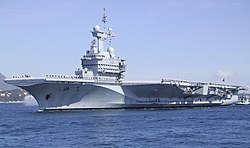

In France, and around the world, many things have been named after Charles de Gaulle.


In France, and around the world, many things have been named after Charles de Gaulle.
Many streets and public buildings in France bear the name of Charles de Gaulle. They include:
De Gaulle is also commemorated outside France, particularly in street names. These include: